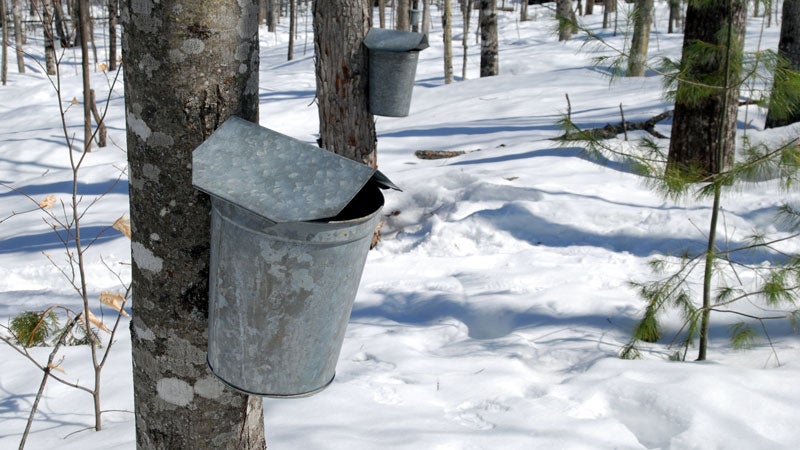Vermont harvesters won’t have to venture far into the forest to find mature maple trees to procure maple syrup. Researchers at the University of Vermont have discovered a new way to gather the delectable goo.
Traditionally—because people believed that sap flows solely from the bottoms of older trees—harvesters have hiked into the forest during late winter to place taps on mature trees. As the sap thaws, it’s collected in buckets and is then processed into maple syrup.
Rather by accident, UVM researchers discovered something that could change this process forever. They found a wild maple tree that was missing its top, with sap flowing freely from the crown like a fountain of sugary youth. When testing their discovery on young maple saplings in the lab, the researchers were able to reproduce this surprising result.
The implications are huge. Saplings could soon be planted in dense rows on farms, making the maple syrup industry similar to other commercial crop industries in North America.
But there’s something to be said for tradition. “Maple syrup is something we head off into the wild forest to get,” syrup farm co-owner Laura Sorkin . “Vermonters, I think, would be very reluctant to give that up.”


